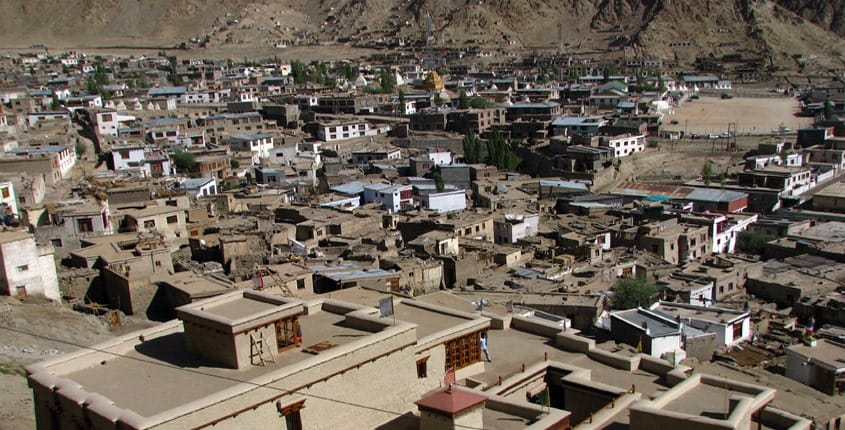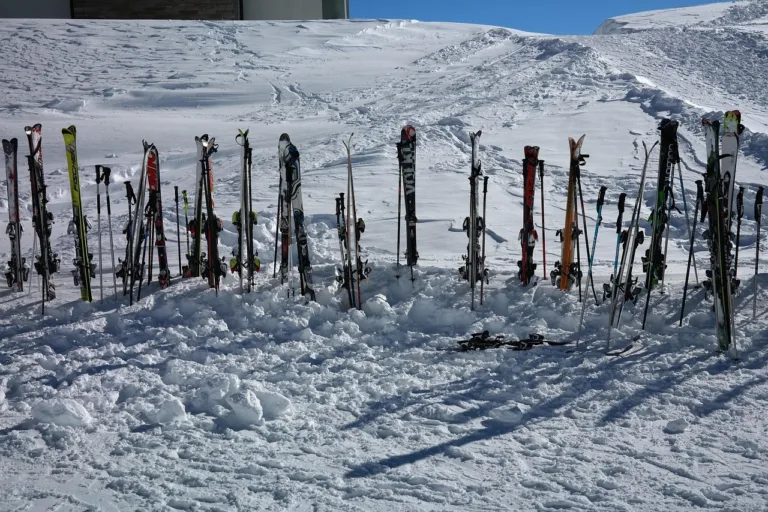By – Mohit Bangari
07 July 2025
Leh Old Town – A Walk Through Ladakh’s History

Explore Himalaya With Me!!

When someone visits Ladakh, they mostly think about Pangong Lake, Nubra Valley, Khardung La, or maybe monasteries like Hemis and Thiksey. But few people know that Leh Old Town is like a time machine. It takes you back centuries, where every alley, wooden door, mud-brick house, and gompa has a story to tell.
Today, I want to take you through the narrow lanes of Leh Old Town – the forgotten heart of Ladakh.
Leh Old Town is the original settlement of Leh city, situated just below the grand Leh Palace. It is one of the oldest continuously inhabited areas in the Himalayas. The entire Old Town area is built in the traditional Tibetan-Ladakhi style, mostly with mud bricks, poplar wood, and flat roofs.
Many houses here are more than 300–400 years old, and some even date back to the 16th century when King Sengge Namgyal ruled this region.
Even though now modern Leh has spread wide with new buildings and guesthouses, this ancient core of Leh remains rooted in history and culture.
This is not just any old neighborhood. The Leh Old Town is recognised as one of the 100 Most Endangered Sites in the World by the World Monuments Fund.
Why?
Because it reflects a unique fusion of Central Asian, Tibetan, and Indian architecture – something you won’t find anywhere else. It was once a major stop on the Silk Route connecting India with Tibet, Yarkand (Xinjiang), and Central Asia.
Traders from all over the world used to walk these lanes, bringing silk, spices, wool, turquoise, and stories with them.
Even now, you can feel that vibe when you walk through the mud-walled alleys and see ancient prayer wheels spinning quietly in corners.
Leh Palace stands tall above the Old Town like a silent guardian. Built in the 17th century by King Sengge Namgyal, it looks quite similar to Lhasa’s Potala Palace but on a smaller scale. From its top floors, you get a stunning view of the entire city and the Zanskar range.
This palace was once the royal residence, but after Dogra invasions, the royal family moved out. Still, the palace has stood strong and now maintained by the Archaeological Survey of India (ASI).
Hidden between the busy market and the old houses, this museum is a gem. It shows Ladakh’s rich history with Central Asia – trade routes, culture, art, and communication. They even display rare artefacts, old utensils, musical instruments, traditional costumes, and coins used during the Silk Route days.
This is a restored traditional house in the heart of Old Leh. Lala’s Café is set up inside a 150-year-old Ladakhi house and now used for photography exhibitions, art displays, and workshops.
You can sit with a cup of butter tea and enjoy the vibe of old Ladakh right here.
You’ll see several small chortens (stupas) and mani walls with carved stones inscribed with “Om Mani Padme Hum.” These are signs that spirituality was deeply rooted in the daily life of the people living here.
Houses in this area are not just structures – they are a blend of architecture, climate adaptation, and culture. They’re built from sun-dried mud bricks with wooden beams for support. The thick walls help in keeping homes warm during harsh winters and cool in summer.
Many houses are multi-storied with storage and cattle space in the lower level, and living quarters above.
Some families still live here, while some houses are abandoned, slowly falling apart.
With time, modernization, migration, and tourism have taken a toll on this ancient area. Many traditional houses are being replaced by concrete buildings. Some areas are completely abandoned.
There are also problems of:
Water leakage
Foundation damage
Improper waste disposal
Lack of awareness among new generation
Another major concern is that because of tourism, a lot of modern cafes and shops are popping up, disturbing the original Ladakhi aesthetics.
Thankfully, many organisations and individuals are working hard to save this treasure.
Leh Old Town Initiative (LOTI) is a local group working for the conservation and sustainable development of this historic area. They help in:
Restoring old buildings
Encouraging traditional architecture
Conducting cultural workshops
Promoting eco-tourism
Many international conservationists and architects have also joined hands with them. Local craftsmen are being trained in traditional building techniques again.
Even tourists can contribute by choosing to stay in homestays, respecting the culture, and avoiding plastic use in the old town.
The best months are May to September, when the roads are open, weather is pleasant, and all cafes, museums, and homes are accessible. Avoid winter months (Nov to March) as it becomes extremely cold, and many locals shift to warmer areas.
Wear proper shoes as most streets are stone-paved and steep.
Talk to locals if you get a chance. They have beautiful stories.
Avoid clicking photos of houses without permission.
Try traditional food like thukpa, butter tea, and skyu in family-run kitchens.
Always carry water and sunscreen.
Do not litter. Carry your waste back with you.
As a Himalayan travel lover, I have written other articles that might interest you too:
If you’re thinking of a skiing trip, check out Auli vs Gulmarg – Best Ski Destination in India. Both places have charm, but you’ll know which suits your travel style.
For adventure training, don’t miss Best Mountaineering Institutes in India – A Complete Guide. Ladakh also has great training options.
If you’re confused between cold deserts, read my honest comparison: Kinnaur vs Spiti – Which is Better for First Trip?
For offbeat trekkers, I also wrote a guide on the Pir Panjal Lakes Trek – less explored, raw Himalayan beauty.
Leh Old Town is not just a location on the map – it’s a living museum. It’s where Ladakh’s heart beats the loudest. Walking through these narrow paths is not just sightseeing, it’s soul-seeing.
So next time when you go to Leh, don’t just rush to tourist points. Take out time to walk through this old maze of stories, wisdom, and resilience.
Because Leh Old Town is not just about the past. It is the spine that supports Ladakh’s present and future.
If you’re planning to visit soon, feel free to reach out to me for homestay or local recommendations. And do share your experience too.
Let’s keep Ladakh’s roots alive, together.
Written by Mohit Bangari – Exploring Himalayas one story at a time
Website: mohitbangari.com
You can also explore more on Himalayan treks like Darma Valley, Adi Kailash, and others on my website mohitbangari.com, where I share full guides, routes, permit tips and cultural info.
By – Mohit Bangari
07 July 2025
Do you know about Ramman festival of Salud-Dungra village? It’s one of the intangible world cultural heritage of India in UNESCO. You can read a detailed article on this topic here.


Explore Himalaya With Me!!